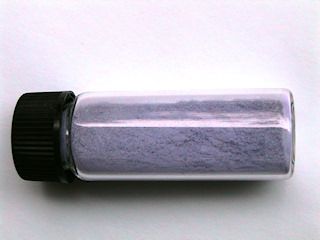


| Quote: |
| Quote: |
| Quote: |
| Quote: |
| Quote: |
| Quote: |


 . The black stuff probably just is plain CuO. I also did not observe any of
the 'pyrotechnic' reactions, although at a certain point I even heated the stuff with a propane torch.
. The black stuff probably just is plain CuO. I also did not observe any of
the 'pyrotechnic' reactions, although at a certain point I even heated the stuff with a propane torch.  (it is over
23:00 over here), but tomorrow evening I will try the experiment with Na-DCCA, NaOH and acetone and see what happens. I'll keep you updated with the
result.
(it is over
23:00 over here), but tomorrow evening I will try the experiment with Na-DCCA, NaOH and acetone and see what happens. I'll keep you updated with the
result.| Quote: |

| Quote: |
 . Strange that acetone and TCCA alone do not react, but that a trace of acid
apparently gives a very exothermic reaction. I'll certainly try it (on a very small scale to start with). But for now, I first am going to do my
homework: "TClCA.rar"
. Strange that acetone and TCCA alone do not react, but that a trace of acid
apparently gives a very exothermic reaction. I'll certainly try it (on a very small scale to start with). But for now, I first am going to do my
homework: "TClCA.rar"  (thanks Nicodem !!).
(thanks Nicodem !!).  Is the link broken?
Is the link broken?| Quote: |
 !
!| Quote: |
 Anywho, I wanted to try to have my reactant be anhydrous ethanol. Added a few ml
at a time and the solution turned yellowish green and fizzed very very little. Neglible heating was observed. After I had added al the ethanol I
wanted(about 100ml) a brisk but not violent effervescence set in after a delay. All at once Cyanuric acid precipitated and the solution is clear with
a nose burning fruity smell(acetylaldehyde?). I did not notice any chlorine or other simular fumes other than the pungent aldehyde sting in my
nostrils. This really could be acetyladehyde on the cheap but hot do you separate aldehydes from ketones? I know ammonia bonds to aldehydes would
this be the secret? I cannot use sodium bisulfite solution.
Anywho, I wanted to try to have my reactant be anhydrous ethanol. Added a few ml
at a time and the solution turned yellowish green and fizzed very very little. Neglible heating was observed. After I had added al the ethanol I
wanted(about 100ml) a brisk but not violent effervescence set in after a delay. All at once Cyanuric acid precipitated and the solution is clear with
a nose burning fruity smell(acetylaldehyde?). I did not notice any chlorine or other simular fumes other than the pungent aldehyde sting in my
nostrils. This really could be acetyladehyde on the cheap but hot do you separate aldehydes from ketones? I know ammonia bonds to aldehydes would
this be the secret? I cannot use sodium bisulfite solution. I
especially like the nitrile route.
I
especially like the nitrile route.| Quote: |
| Quote: |

| Quote: |
Quote: Originally posted by garage chemist  |


Quote: Originally posted by garage chemist  |
Quote: Originally posted by woelen  |


 I might consider adding a little amount of sodium carbonate to the
filtered solution just in case it happens to go on it's own when distilling it. TCCA should dissolve up to 35g/100ml to acetone and maybe even more
when heated.
I might consider adding a little amount of sodium carbonate to the
filtered solution just in case it happens to go on it's own when distilling it. TCCA should dissolve up to 35g/100ml to acetone and maybe even more
when heated.Quote: Originally posted by Polverone  |

| Quote: |
| Quote: |